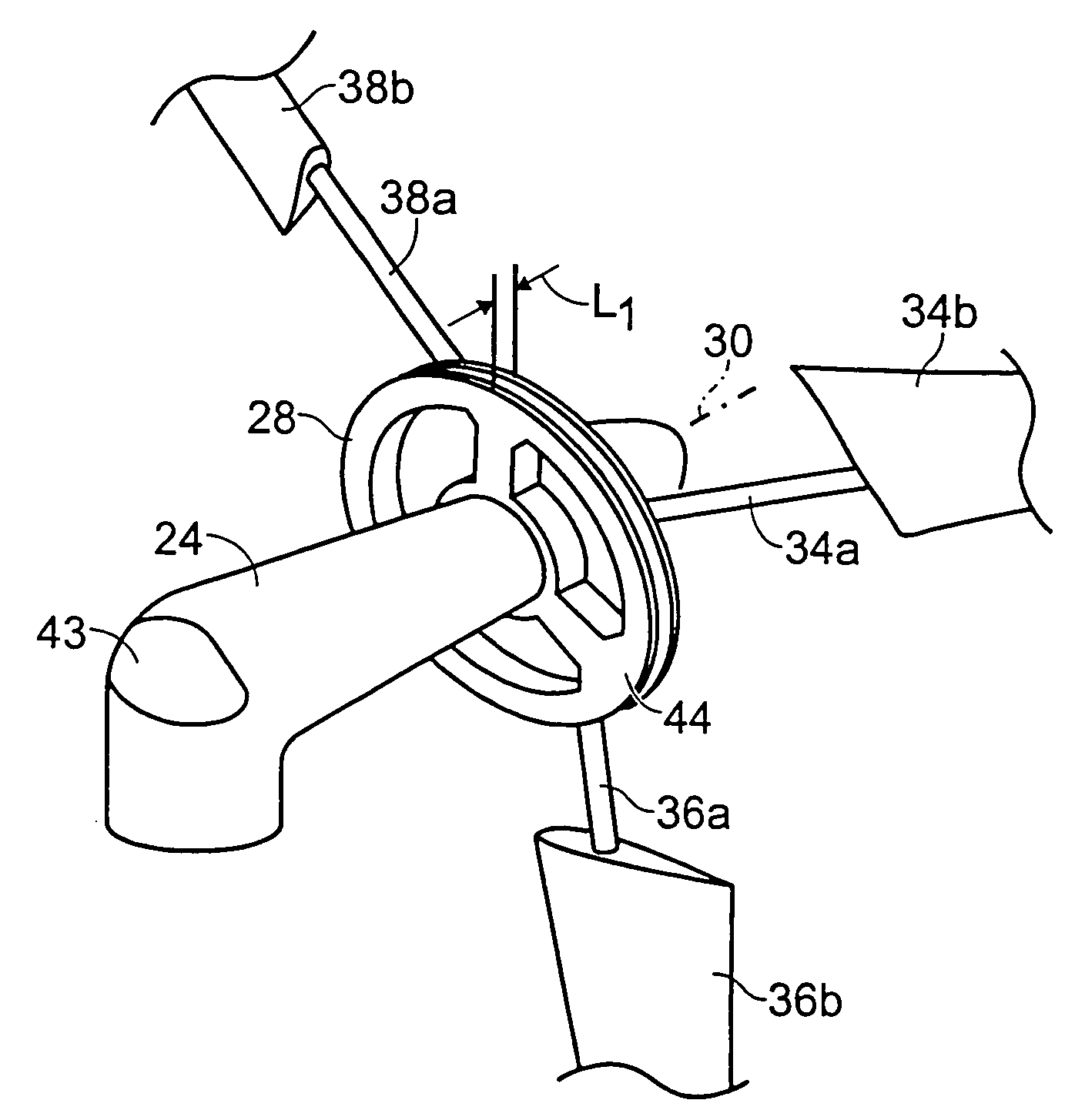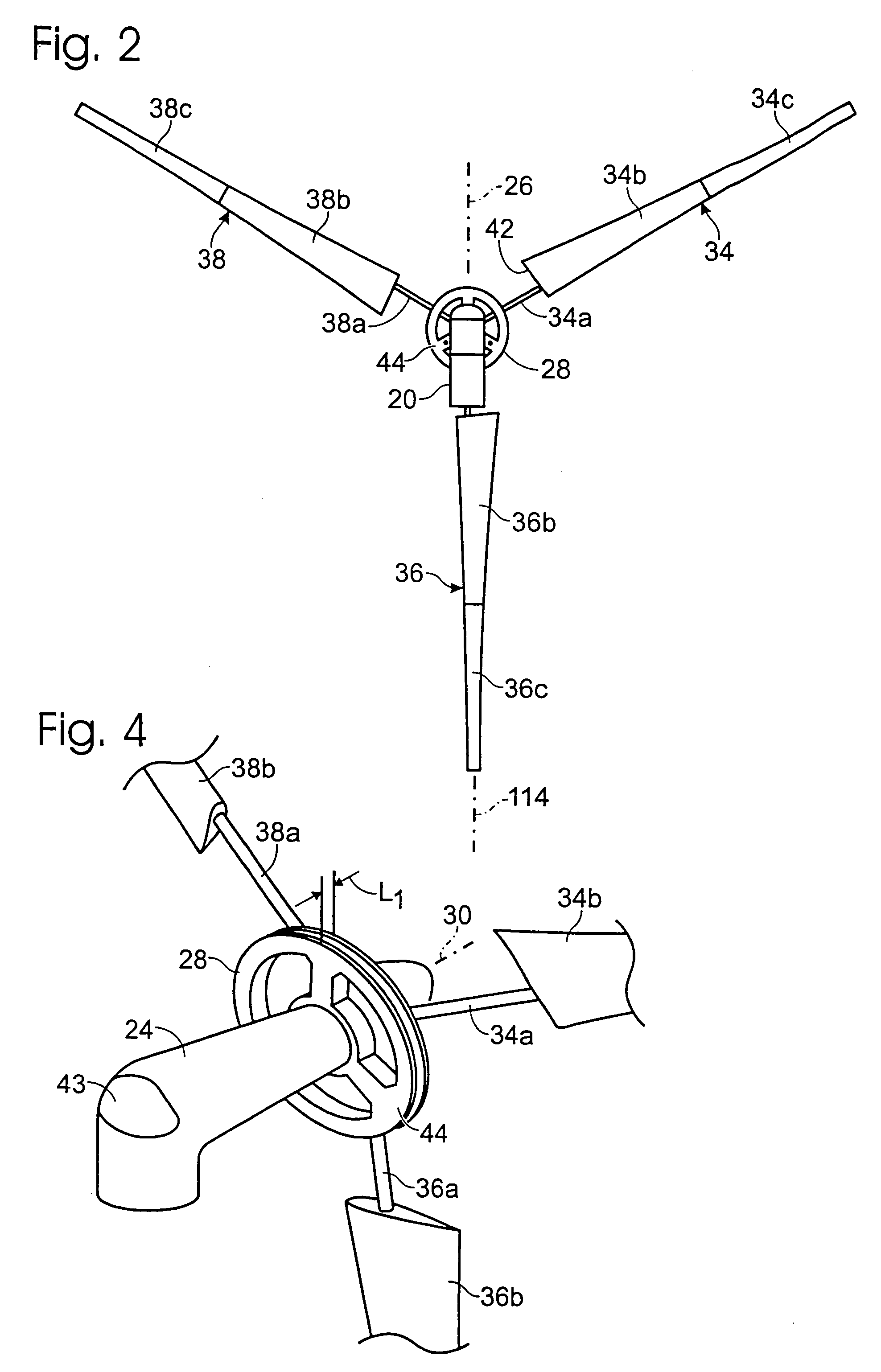Wind energy conversion device
a wind energy and conversion device technology, applied in the direction of electric generator control, rotors, machines/engines, etc., can solve the problems of affecting affecting the operation of wind generators, and devices subject to variations in wind speed, so as to improve overspeed protection, reduce noise, and reduce the electrical output of wind generators
- Summary
- Abstract
- Description
- Claims
- Application Information
AI Technical Summary
Benefits of technology
Problems solved by technology
Method used
Image
Examples
Embodiment Construction
[0039]Turning now to the drawings, there is shown in FIG. 1 a wind energy conversion device 16 constructed according to the present invention. The device is supported on a tower 18 in the form of an open frame that provides stationary support for the power generating components. The tower includes a vertical sleeve 20 and legs 22 extending upwardly from the ground or foundation (not shown) to the sleeve. Horizontal or inclined cross bracing members (not shown) are coupled between the legs to stabilize tower 18. The height of tower 18 depends on the size of the propeller, and on factors such as topography and proximity of trees and other obstructions to the wind. In one preferred version of device 16, involving a propeller diameter of 20 feet, the tower height can range from about 40 feet to about 140 feet.
[0040]A propeller mounting structure including a shroud 24 is mounted at the top of the tower, to pivot about a substantially vertical yaw axis 26 (FIG. 2). The propeller mounting ...
PUM
 Login to View More
Login to View More Abstract
Description
Claims
Application Information
 Login to View More
Login to View More - R&D
- Intellectual Property
- Life Sciences
- Materials
- Tech Scout
- Unparalleled Data Quality
- Higher Quality Content
- 60% Fewer Hallucinations
Browse by: Latest US Patents, China's latest patents, Technical Efficacy Thesaurus, Application Domain, Technology Topic, Popular Technical Reports.
© 2025 PatSnap. All rights reserved.Legal|Privacy policy|Modern Slavery Act Transparency Statement|Sitemap|About US| Contact US: help@patsnap.com



